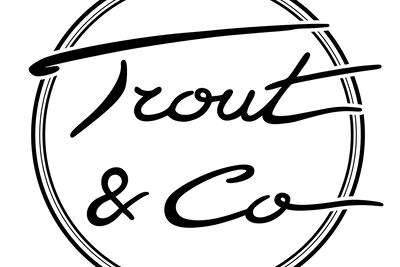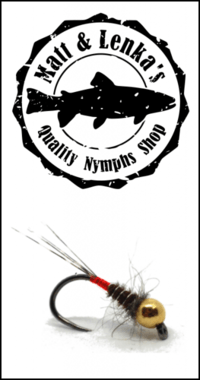In the many different techniques that counts fly fishing, the tandem between a dry fly and a nymph is one of the classics. There’s been a real update in this tandem lately. Just like Euronymphing, dry fly and dropper nymph tandem followed the modern nymphing paradigm. You are curious about the new way to fish dry-nymph ? Discover everything there is to know about this technique and how competitors use it nowadays in this article.
Dry dropper : the basics
The tandem is very simply the presentation of a nymph under a dry fly. The dry is usually liked to the tippet with a T-shaped short section of line in order to make it drift properly. Just like with Euronymphing, the goal is to prospect blindly seemingly suitable water. This technique needs, just as well as Euronymphing, a good knowledge of the river and the fish you’re targeting.
The weight of the nymph used for the tandem rig needs to be adapted to the current and depth of the pool in front of you. The usual couple “speed/depth” of the nicely looking water ideal for tandem dry-nymph fishing is rather small. The commonly used bead head are usually from 1.5 to 3 mm.
The size and the volume of the dry fly will change according to the bead head you are using underneath. A dry that is too small or not hairy enough will sink quickly and become useless. To help you pick the right fly with the right nymph, here are some indicative values:
- Nymph bead from 2 to 2.4 mm = dry fly on hook sizes 16 to 18
- Nymph bead from 2.4 to 2.8 mm = dry fly on hook sizes 14 to 16
- Nymph bead from 2.8 and above = dry fly from 14 and up to 12 or 10
The distance between the dry fly and the nymph on a good tandem rig must be roughly 1.5 times the depth of the pool you are fishing.
The dry fly here is mostly used as an indicator. When it stops or sinks, it means something stopped the nymph underneath, and it is most likely to be a trout. But it can also catch the odd riser, stimulated by this big hairy fly drifting perfectly thanks to the nymph. The best model to use as a dry in a tandem rig is parachute type. They offer a perfect visibility and should involve materials with high floatability like deer hair.
Fishing action with a tandem dry-nymph rig
Tandem fishing with a dry and a nymph could be declined in two different ways according to the kind of water and the distance of fishing. Each one of them requires its own specific gear:
- Fishing short distance in medium rivers
To cast accurately at short distance, the best way to proceed is to use modern nymphing gear. A light, long (at least 10’) and low power (#2 to #3) with a long tippet (at least 20 feet). Just like if you were euronymphing, the cast is a unique twist of the wrist to project the tandem. It doesn’t require to use the fly line inertia. Since the rod is long and the tippet as well, you can expect to fish properly up to 10m. There is only the bead head weight that will influence the rod loading with this technique. Because of that, you will need to use at least a bead of 2.4 mm.
- Fishing long distance with a tandem
If you need more stealth and to cast at longer distance, this technique will be much more appropriate. On some sections, often to very wary trout, tandem fishing on a long-distance is needed. In this case, it is best to use the fly line to cast the tandem rig, just like if you were fishing with the dry fly only. Compared to the previous technique, there are two main differences.
1. You will now be able to use smaller beads but not anything heavier than 2.4 mm. The best size is between 1.5 and 2.4 mm.
2. To cast accurately, it is also best to use a slightly more powerful rod. A 9 or 10’ rod, with a power superior or equal to #3 seems to be the most appropriate combo.
The best waters for dry dropper
Plenty rivers, streams and spots can be fished efficiently with a tandem dry-nymph. The dry fly brings bearing to the nymph which makes it glide longer during the descending phase. It makes the nymph more attractive on the slowest sections where the dry is almost only an indicator. It can be near rocks that trout use to cover themselves or just a slow current on the edge of a fast stream, but also a raft or any other soft section of the flow. This technique is particularly efficient to target trout feeding suspended in the water column.
Only the current speed/depth couple that are higher like in a mountain stream or a large and powerful river prevent the usage of this technique. Anywhere you have to fish sunken, Euronymphing will be better.


